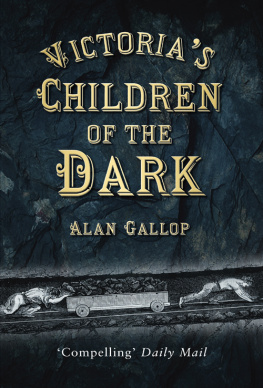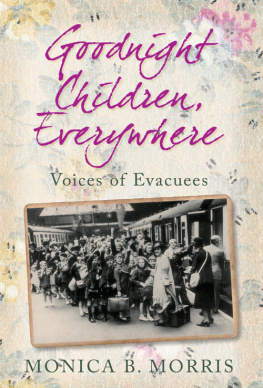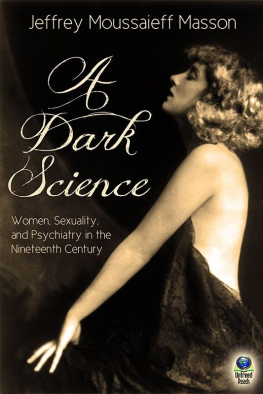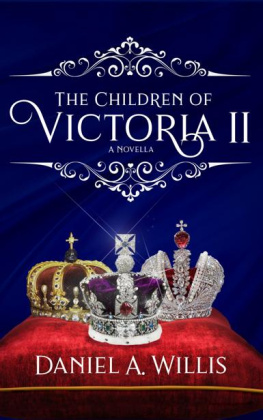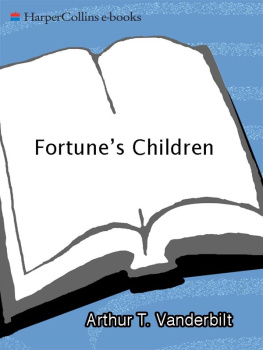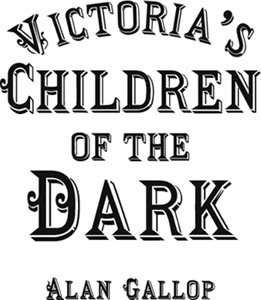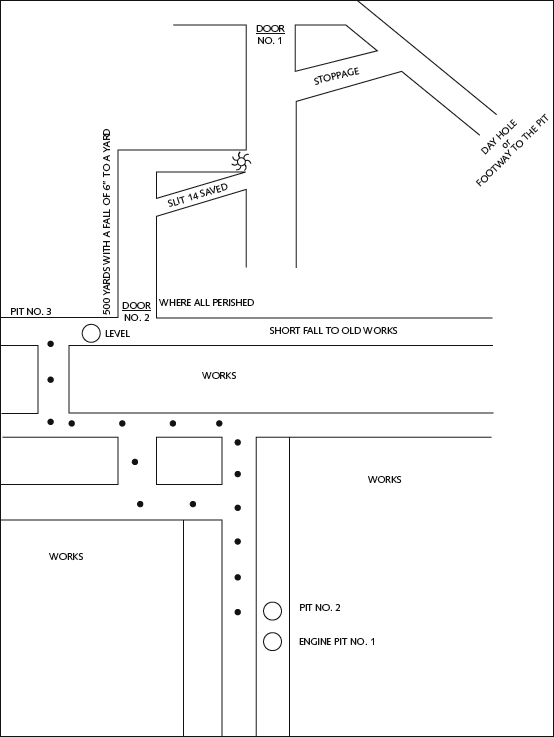This book is dedicated to the memory of
Jack Wood
and the children...
Previously published as Children of the Dark in 2003
This edition published in 2010
The History Press
The Mill, Brimscombe Port
Stroud, Gloucestershire, GL 5 2 QG
www.thehistorypress.co.uk
This ebook edition first published in 2011
All rights reserved
Alan Gallop, 2003, 2010, 2011
The right of Alan Gallop, to be identified as the Author of this work has been asserted in accordance with the Copyrights, Designs and Patents Act 1988.
This ebook is copyright material and must not be copied, reproduced, transferred, distributed, leased, licensed or publicly performed or used in any way except as specifically permitted in writing by the publishers, as allowed under the terms and conditions under which it was purchased or as strictly permitted by applicable copyright law. Any unauthorised distribution or use of this text may be a direct infringement of the authors and publishers rights, and those responsible may be liable in law accordingly.
EPUB ISBN 978 0 7524 6927 0
MOBI ISBN 978 0 7524 6928 7
Original typesetting by The History Press
Contents
Diagram of the Husker Pit, Silkstone, showing the day hole and Door No. 2. (Author)
Acknowledgements
T hree people provided me with an abundance of material for this book. Each was wonderfully helpful and gave me more information than I could possibly have hoped for. Thanks then, to:
Jack Wood, whose own locally-produced book about the Husker Pit disaster, published in Silkstone in 1988 to commemorate the 150th anniversary of the tragedy, made me want to dig even deeper and find out more about life in his village in the nineteenth century. Jack, who passed away in August 2002, was a mine of information and patiently answered my questions, showed me around his village and brought its history to life. Jack, you are missed by a great many people....
Ian Winstanley, author and historian, whose publishing enterprise, Picks Publishing of Ashton-in-Makerfield, Wigan, has made mining history more accessible. His Coal Mining History Resource Centre website (www.cmhrc.pwp.blueyonder.co.uk) is highly recommended to anyone interested in the subject. Ians personal interest in this book has resulted in my obtaining rare source material and many of the illustrations reproduced on later pages. Ians passion for mining history is highly infectious....
John Goodchild (and Fern) of the John Goodchild Collection, an independent treasure-trove of mining history, carefully catalogued and wonderfully displayed in cosy rooms below the Central Library in Wakefield. John kindly located several books for me to examine which I had previously found difficult to obtain and produced several more rare ones he thought might also be of interest to my study. They were! John tells me that on his death, his large collection passes to the ownership of Wakefield District Council. May that day be long away....
I am also indebted to: My friend Gary Symes for re-drawing an old and complicated map of the Silkstone township from 1842 which has been reproduced on the endpapers of this book; Alison Henesey at the National Coal Mining Museum for England at Caphouse Colliery, Overton near Wakefield, which provides a wonderful opportunity for people to actually travel down a real coal mine and journey into the past to experience mining history at first hand; the friendly and helpful staff, both at the Sheffield Archives (where valuable documents relating to the Clarke Family of Noblethorpe Hall, Silkstone NRA Ref: 6593 are made available to the public) and the British Librarys Newspaper Library at Colindale, London NW9; Robert Frost at the Yorkshire Archaeological Society, Leeds; Kath Parkin at the Barnsley Chronicle and Colin Bower of Silkstone Parish Council, who both provided me with valuable information about how the Husker pit disaster has recently and surprisingly forced its way back into the public conscience on two occasions, reminding us that Britains bad old days are never really very far away....
Since Children of the Dark first appeared in 2003, I have received tremendous support from a great many people in South Yorkshire who have taken the book to their hearts, their homes, classrooms and local stages via dramatised versions. They include numerous descendants of children killed in the 1983 Husker Pit disaster who have joined together on various occasions to keep the memory of their ancestors alive. Thanks also to Jim and Dorothy Travis, Rev. Simon Moore, Margaret Bower, Doris Stubbs, Les Young, Jim Ritchie of Silkstones Roggins Local History Group and Stuart Berry from the National Coal Mining Museum for England near Wakefield.
Preface
T his is a true story about women and young children working in Britains coal mines during the first half of the nineteenth century, a time when industrial labour was cheap and certain jobs could only be undertaken by those who were very young or very small. Many of the incidents and characters featured in Victorias Children of the Dark have fallen through cracks in British history books and much of the story related here is being told for the first time.
The Clarkes of Silkstone, the Burkinshaw brothers and their Dad and Mam, James Farrar, the Revd Henry Watkins, Jellinger Symonds, Samuel Scriven and David Swallow were all real people whose names rarely or never appear in more conventional books about the period popularly known as the industrial revolution. With the exception of Lord Ashley, who gained later fame for his achievements when he inherited his fathers title of Lord Shaftesbury, these characters are unknown to the general public but in their own way played an important part in our understanding of what it was like to work in, own or observe what went on in a Yorkshire coal mine in early Victorian times.
I came across the story of the 1838 Husker Pit disaster one Easter while visiting relatives in Yorkshire with my wife and children. My mother comes from a small village near Barnsley, my grandfather and some of my uncles had worked as colliers in the area and the sight of winding gear, spoilheaps and railway sidings for coal wagons had been familiar to me since I was born until they were all removed following pit closures in the 1980s. Even my father, who came from down south, worked at a South Yorkshire colliery for a short time after his army discharge in 1945.
A leaflet highlighting things to see and do in and around Barnsley mentions the tragic accident, which killed 26 children when a mineshaft through which they were travelling in the small township of Silkstone flooded during a freak rain and hail storm. It showed two memorials one marking a mass grave in which the children were laid to rest and another close to the site where the accident happened.
The former was easy to locate, rising sharply out of the ground in the local churchyard, but the second took some finding and enquiries among Silkstones younger locals drew blank looks. For some reason, this both annoyed and disturbed me. Annoyance because, in my opinion, they should have known where an important monument such as this was located and disturbance because I felt that the children of the dark had been forgotten and their story lost in the mists of time.

